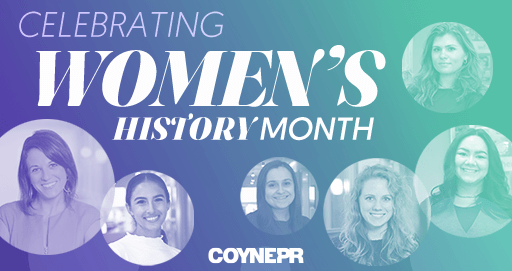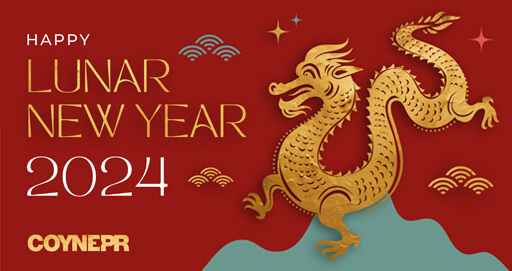As originally seen on O’Dwyer’s
The term “influencer” has become ubiquitous in marketing, with the most common association being someone posting on TikTok or Instagram. It’s certainly justified – according to Mintel, roughly four in five people follow an online influencer or content creator.
Typically, when the term influencer is used, there is an emphasis on social media influencers. But there are many other stakeholders wielding influence to consider, all playing a role in engaging, informing and inspiring audiences, contributing to a brand’s success.
This article explores the nuances of this sphere of influence, highlighting the roles they play and the benefits for brands navigating this complex terrain.
Earned Media – the Original Influencer
Despite ongoing consolidation and industry disruption, “traditional” media are still enormously influential. Earned media is the original influencer.
For example, let’s look at it strictly from a trend perspective. It’s well-established that online influencers drive trends (think #GirlDinner and #CheesePickle) and that the media will report and amplify them. But the reverse is certainly true as well. Media have always been trendspotters; after all, “new” is a fundamental element of the word “news.” But there are other roles the media play here. Reporters have a platform for developing longer-form content to contextualize trends. We also know that “media leads to other media.” Think of how many times a story starts online and then gets picked up and reported on by broadcast media, or how a national story inspires a local outlet to add their localized take on it. All this amplification ultimately creates a feedback loop that often brings the trend back to social, further expanding its reach or extending its lifecycle.
So, while “what’s trending on social” certainly matters, brands should not overlook the importance of how an earned media strategy can and should contribute to this process.
The Unexpected Influencer
According to research from Mintel, 72 percent of people on social media either create content or would like to create content for others’ entertainment; however, only 10 percent describe themselves as influencers. While the majority of people do not consider themselves influencers, the desire for posting content and the nature of algorithms has given rise to the “connected consumer” – individuals who may not seek fame but can suddenly find themselves at the center of viral moments.
These unexpected influencers can have a profound impact on brands, offering authentic and relatable content that strikes a chord with a broad audience. Brands that adopt a “surprise and delight” strategy can effectively engage with these influencers, leveraging their organic reach and credibility to enhance their brand’s story. This approach requires a team that follows news and trends closely, can act quickly, and knows how to differentiate between a storytelling opportunity and a potentially brand-damaging misfire.
The Influencer in Chief
The role of a company’s CEO today extends far beyond operational leadership. Due to a confluence of factors, CEOs are playing more of a lead role in communicating not just to shareholders but also to the general public, employees, customers and business partners. In an era where authenticity and transparency are highly valued, the CEO’s ability to communicate and connect with different audiences can significantly impact a brand’s reputation. Of course, there is a delicate balance of when, where, and in what capacity a CEO should be involved in your communications, but we’ve found that their involvement in the right capacity can impart an added degree of importance, excitement and company commitment that others cannot replicate.
The Invisible Influencer
Perhaps the most underestimated yet potent influencers are a company’s employees. And that influencer is not always the person in the executive suite. The Institute for Corporate Productivity, a research firm focused on human capital, has written about the importance of the “invisible influencer,” employees throughout different levels of the organization who may not have a hefty title but do a lot of heavy lifting in advancing a brand’s narrative. We advise our clients to ensure their employees are at the very least informed but ideally included in or celebrated for their role in any campaign, initiative, or tentpole moment for the company or a brand.
The Subject Matter Expert
Particularly for food and nutrition brands, third-party experts such as nutritionists, registered dietitians, and fitness experts play an increasingly important role in today’s health-conscious society. These professionals can break down complex information and make it more accessible and actionable for the general public, an increasingly important trait in a sea of information that can confuse or mislead. Their influence extends well beyond informing individual consumer decisions, contributing to broader conversations about wellness, nutrition, and public health. This collective is not just an ongoing resource for reporters; many are social media influencers in their own right. Our agency has a long history of successfully identifying and cultivating relationships with this group of influencers, ensuring an alignment of brand values, expertise, audience, and authenticity.
The Business Partner
Collaborations with business partners are a powerful form of influence. These symbiotic relationships enable businesses to tap into new audiences, leveraging the trust and rapport established by their partners to gain an implicit endorsement. Paramount to this approach is ensuring there is alignment on purpose, values and missions between the organizations, clearly defining the goals and outcomes of the collaboration, and maintaining ongoing communication throughout the relationship. Many a partnership has gone astray over unclear objectives, misunderstood intentions, or a midstream change in execution or expectations. “No surprises” should be your mantra here.
From the traditional power of earned media to the significant impact of every employee within a company, the influencer landscape is, without a doubt, vast, varied, and vital.PR professionals are uniquely suited for navigating the totality of this influencer universe. Earned media relations, CEO communications, and employee engagement are foundational elements of our profession, and our skills in understanding the nuances of how to engage different audiences provide intrinsic value for communicating with social media influencers. Because so many of these influencers intersect with our industry, it’s up to PR professionals to make sure our voices are heard during the strategy and planning phase to ensure that brands are getting the most value from what they consider “influencer marketing.”




